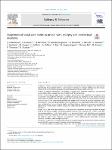Awareness of social care needs in people with epilepsy and intellectual disability
| dc.contributor.author | Gabrielsson, A | |
| dc.contributor.author | Tromans, S | |
| dc.contributor.author | Newman, H | |
| dc.contributor.author | Triantafyllopoulou, P | |
| dc.contributor.author | Hassiotis, A | |
| dc.contributor.author | Bassett, P | |
| dc.contributor.author | Watkins, L | |
| dc.contributor.author | Sawhney, I | |
| dc.contributor.author | Cooper, M | |
| dc.contributor.author | Griffiths, L | |
| dc.contributor.author | Pullen, A | |
| dc.contributor.author | Roy, A | |
| dc.contributor.author | Angus-Leppan, H | |
| dc.contributor.author | RH, T | |
| dc.contributor.author | Kinney, M | |
| dc.contributor.author | Tittensor, P | |
| dc.contributor.author | Shankar, Rohit | |
| dc.date.accessioned | 2023-07-31T14:23:53Z | |
| dc.date.available | 2023-07-31T14:23:53Z | |
| dc.date.issued | 2023-08 | |
| dc.identifier.issn | 1525-5069 | |
| dc.identifier.issn | 1525-5069 | |
| dc.identifier.other | 109296 | |
| dc.identifier.uri | https://pearl.plymouth.ac.uk/handle/10026.1/21100 | |
| dc.description.abstract |
Background Nearly a quarter of people with intellectual disability (ID) have epilepsy with large numbers experiencing drug-resistant epilepsy, and premature mortality. To mitigate epilepsy risks the environment and social care needs, particularly in professional care settings, need to be met. Purpose To compare professional care groups as regards their subjective confidence and perceived responsibility when managing the need of people with ID and epilepsy. Method A multi-agency expert panel developed a questionnaire with embedded case vignettes with quantitative and qualitative elements to understand training and confidence in the health and social determinants of people with ID and epilepsy. The cross-sectional survey was disseminated amongst health and social care professionals working with people with ID in the UK using an exponential non-discriminative snow-balling methodology. Group comparisons were undertaken using suitable statistical tests including Fisher’s exact, Kruskal-Wallis, and Mann-Whitney. Bonferroni correction was applied to significant (p < 0.05) results. Content analysis was conducted and relevant categories and themes were identified. Results Social and health professionals (n = 54) rated their confidence to manage the needs of people with ID and epilepsy equally. Health professionals showed better awareness (p < 0.001) of the findings/recommendations of the latest evidence on premature deaths and identifying and managing epilepsy-related risks, including the relevance of nocturnal monitoring. The content analysis highlighted the need for clearer roles, improved care pathways, better epilepsy-specific knowledge, increased resources, and better multi-disciplinary work. Conclusions A gap exists between health and social care professionals in awareness of epilepsy needs for people with ID, requiring essential training and national pathways. | |
| dc.format.extent | 109296-109296 | |
| dc.format.medium | Print-Electronic | |
| dc.language | en | |
| dc.publisher | Elsevier | |
| dc.subject | Social care | |
| dc.subject | Epilepsy training | |
| dc.subject | Epilepsy risk assessments | |
| dc.subject | Attitudes to epilepsy | |
| dc.subject | Attitudes to intellectual disabilities | |
| dc.subject | Quality of life | |
| dc.subject | Holistic care | |
| dc.title | Awareness of social care needs in people with epilepsy and intellectual disability | |
| dc.type | journal-article | |
| dc.type | Journal Article | |
| plymouth.author-url | https://www.webofscience.com/api/gateway?GWVersion=2&SrcApp=PARTNER_APP&SrcAuth=LinksAMR&KeyUT=WOS:001035792300001&DestLinkType=FullRecord&DestApp=ALL_WOS&UsrCustomerID=11bb513d99f797142bcfeffcc58ea008 | |
| plymouth.volume | 145 | |
| plymouth.publication-status | Published | |
| plymouth.journal | Epilepsy and Behavior | |
| dc.identifier.doi | 10.1016/j.yebeh.2023.109296 | |
| plymouth.organisational-group | |Plymouth | |
| plymouth.organisational-group | |Plymouth|Faculty of Health | |
| plymouth.organisational-group | |Plymouth|Users by role | |
| dc.publisher.place | United States | |
| dcterms.dateAccepted | 2023-05-30 | |
| dc.date.updated | 2023-07-31T14:23:53Z | |
| dc.rights.embargodate | 2023-8-1 | |
| dc.identifier.eissn | 1525-5069 | |
| dc.rights.embargoperiod | forever | |
| rioxxterms.versionofrecord | 10.1016/j.yebeh.2023.109296 |


